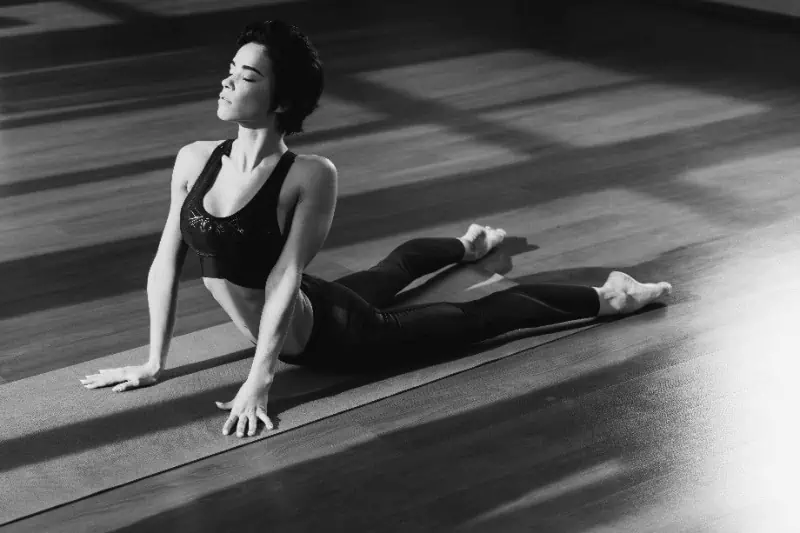Today, I wanted to share with you some things that I find fascinating about the history of yoga in America. It’s amazing how much it has become a part of American culture!
Did you know that yogis from the East introduced yoga in America in the late 19th century? They brought over different styles, including Iyengar and Ashtanga, as well as practices like transcendental meditation.
Initially, yoga sparked curiosity and intrigue, but soon enough, it became popular in American society. I found it fascinating how yoga brought together people of different religions from various states so quickly, all united by their love of yoga!
The adaptation of yoga, guided by yogis like Iyengar, who popularized asanas, was gradual yet significant. It evolved from an esoteric spiritual discipline tied to religion to a widely accepted fitness trend. This transformation has been documented in numerous journals and autobiographies penned by Iyengar yoga teachers, their asanas practitioners, and others.
Today, integral yoga institutes featuring various asanas are commonplace across the United States, with a notable number of American participants incorporating yoga mats into their daily routines. This shows people’s commitment to health and well-being in the country. I hope you find the journey of yoga in America as captivating as I did. Here is everything I discovered.
Contents
20th Century: Birth of Posture-Based Yoga

The 20th century marked a significant turn in the history of yoga asanas in the United States, with years of practice attracting numerous participants. This era saw the emergence of Hatha yoga and its asanas as a popular form among people, shifting from its traditional meditative focus to physical wellness over the years, with numerous participants involved.
Emergence of Hatha Yoga
Hatha yoga, characterized by postures (asanas) and controlled breathing (pranayama), gained popularity among a significant number of participants. People are drawn to it, as shown by rising statistics. The practice of asanas has introduced physical yoga to participants in the United States, where body postures have become a key element of the practice.
- Asana: A set of physical exercises designed for body alignment, integral to modern yoga and vinyasa yoga, practiced by myself and many other yoga participants.
- Pranayama: Breathing techniques for more energy and less tension.
Influence of Indian Gurus on Yoga

Indian gurus played an important role in this shift:
Swami Vivekananda Introduced Yoga in America
During the 1893 Chicago World Parliament of Religions, Swami Vivekananda delivered a series of lectures that played a significant role in introducing yoga to the United States and sparking the development of modern yoga as a global phenomenon.
Vivekananda’s speeches, which emphasized yoga’s physical, mental, and spiritual benefits, resonated with many Americans searching for new ways to improve their health and well-being.
As a result, the teachings of yoga began to spread throughout the country, eventually giving rise to a thriving yoga industry that continues to grow to this day.
Paramahansa Yogananda Introducing Yoga to the Western World
Paramahansa Yogananda is widely regarded as the pioneer of introducing Yoga to the Western world. He dedicated his life to spreading the teachings of the Self-Realization Fellowship. Paramahansa’s profound and inspiring teachings have transformed the lives of countless individuals around the world.
Through his writings, lectures, and spiritual practices, Yogananda has brought the ancient wisdom of Yoga to the modern world, offering a practical and transformative path to self-realization and spiritual growth. His legacy continues to inspire and uplift seekers of truth and spiritual seekers alike, making him one of the most influential spiritual leaders of the modern era.
The teachings led participants in the United States to a deeper understanding and appreciation for posture-based yoga, according to Statista statistics.
Shift towards Physical Wellness
By the end of the century, yoga was not just about spiritual enlightenment for participants but also about physical well-being, per United States statistics from Statista.
- Stress relief
- Flexibility improvement
- Strength building
This shift in modern yoga made it more appealing to the United States public, further cementing its place in American culture, as Statista statistics indicate.
Influence of Hippie and New Age Movements

The counterculture movements, particularly the Hippie and New Age movements, played a significant role in the adoption of yoga in America, with participants in these movements leading the charge, as per Statista’s findings.
Yoga and Counterculture
- According to Statista, yoga became popular among counterculture participants seeking alternative ways to find peace of mind.
- Transcendental meditation was one method that attracted attention.
- The philosophy behind yoga resonated with participants looking for non-religious spiritual practices, according to Statista.
Holistic Health and Spirituality
Yoga offered a holistic approach to health:
- Physical: Improved control over breath and body through postures.
- Mental: Enhanced focus through meditation.
- Spiritual: Connection with oneself and others through mindful living.
This holistic perspective of modern yoga appealed to many yoga participants, leading to wider acceptance, as reported by Statista.
Mainstream Acceptance
The impact on mainstream acceptance is notable:
- Yoga studios sprouted across cities.
- Outdoor foundation events included yoga sessions.
- Schools introduced yoga classes for pupils.
In time, yoga transformed from an obscure practice into a mainstream movement promoting both physical fitness and spiritual well-being, as per Statista data. Yoga participants are no longer just about bending bodies into pretzel-like shapes but also tapping into the power within us all to enhance life quality.
Richard Hittleman: An American Yoga Pioneer
Richard Hittleman, a yoga pioneer and father of modern yoga in America, brought a simplified, non-religious form of practice to the masses. He founded his first school of Yoga in Florida in 1957 and introduced Hatha and Iyengar yoga through his first television series, Yoga for Health, in 1961.
- Simplified Yoga: His teachings made yoga accessible, giving access to everyone. The focus for yoga participants was on asanas (postures) and pranayama (breathing exercises), making it easy for beginners.
- Non-Religious Approach: By removing the religious aspect, he made yoga appealing to a broader audience.
Hittleman’s approach led to an increase in home-based practice among yoga participants.
- Home-Based Practice: His TV shows provided step-by-step instructions that yoga participants could easily follow at home.
This man’s influence continues today, with many considering him as a significant yogi who shaped how we perceive and practice yoga in America.
Impact of The Spiritual Leader Ram Dass
Ram Dass’ Influence
Ram Dass, a prominent spiritual leader, played a significant role in integrating Eastern spirituality into Western culture. His teachings helped to bridge the gap between these two distinct cultures, making yoga more accessible and relatable.
- He introduced concepts like mindfulness and self-realization
- Promoted meditation as an integral part of yoga practice
- His teachings had a profound impact on the perception of yoga in America
Popularizing Meditation with Yoga Practice
Meditation became popular alongside yoga due to leaders like Ram Dass. The integration of these practices led to a holistic approach towards health and wellness.
- Yoga for physical well-being
- Meditation for mental clarity and peace
- Combined practice for overall wellness
These aspects contributed significantly to the popularity of yoga in America.
Self-realization and Mindfulness through Yoga
The promotion of self-realization and mindfulness through yoga is another key aspect that spiritual leaders such as Ram Dass emphasize.
- They taught that yoga is not just about physical exercise
- It’s also about understanding oneself better
- And being present in the moment
This philosophy resonated with many Americans, leading to an increased interest in practicing yoga.
Modern-day Yoga Practice and Trends in the U.S.
Various Styles of Yoga
In the United States, there has been a proliferation of different styles of modern yoga practices over time. These include:
- Bikram
- Vinyasa
- Ashtanga, and more.
This diversification has popularized yoga among a broad spectrum of practitioners.
Celebrity Influence and Social Media
The increasing popularity of yoga can be partly attributed to celebrity endorsements. Many Hollywood stars, athletes, and influencers have embraced yoga and shared their experiences on social media. This inspires millions of followers to try it as well.
Celebrities have played an important role in promoting modern yoga techniques as part of physical fitness and exercise routines in the Western world.
Wellness Programs Integration
Yoga is increasingly being integrated into wellness programs across America for stress management and mental health support. According to industry statistics, many corporations now offer classes led by certified vinyasa yoga teachers as part of their employee benefits package.
This trend reflects how deeply embedded yoga has become in American society. It’s not just an exercise fad but a vital component of holistic wellness strategies.
Books providing information on different practices are becoming best-sellers as more people turn to this ancient practice for relief from modern stresses. The growth trajectory shows no signs of slowing down as new practitioners continue to join the ranks every day.
Yoga’s Cultural Impact on America
Yoga has undoubtedly left a significant imprint on American culture, evolving from its early introduction in the 20th century to the widespread practice it is today. Its influence stretches beyond mere physical exercise, permeating into spiritual and lifestyle realms, largely thanks to pioneers like Richard Hittleman and spiritual leaders such as Ram Dass.
Yoga has a rich history that’s still reflected in modern trends. It’s amazing how today’s yoga in America also incorporates new wellness movements to help people live healthier lives.
The journey of yoga in America underscores the nation’s capacity for cultural adaptation and evolution. As we continue exploring this transformative discipline, let us remember its roots and honor its profound impact on our lives.
FAQs
When was it first discovered yoga in America?
During the World’s Columbian Exposition held in Chicago in 1893, Swami Vivekananda delivered captivating lectures that introduced yoga practice to the United States. This historical event not only marked the beginning of yoga’s journey to the West but also paved the way for the emergence of modern yoga as a transcultural movement that has spread across the globe.
How did yoga become popular in America?
Yoga became popular in America due to several factors, including the influence of key individuals like Richard Hittleman, who introduced posture-based yoga to mainstream audiences. Additionally, spiritual leaders such as Ram Dass significantly promoted Eastern philosophy and its connection to yoga. The rise of cultural movements like the hippie movement also contributed to the growth of yoga’s popularity, as it embraced alternative lifestyles and practices.
What are some modern-day trends in American yoga practice?
Modern-day trends include a focus on mindfulness and wellness, incorporation of technology through online classes and apps, fusion practices combining yoga with other fitness modalities, and an emphasis on inclusivity, promoting diverse representations within the community.
Who was Richard Hittleman?
Richard Hittleman was instrumental in introducing yoga to mainstream America in the mid-20th century, with a focus on posture-based yoga (asana), and millions of people were introduced to the practice through his television series “Yoga for Health.”
How does modern-day American yoga differ from traditional forms?
Traditional yoga incorporates a range of practices such as moral codes, controlled breathing, meditation, and physical postures. Modern-day American yoga has a greater emphasis on the physical aspect of the practice with an added focus on mindfulness. This shift towards a more physical form of yoga has led to popularizing yoga as a form of exercise. Still, it is important to recognize that the holistic nature of yoga encompasses much more than just physical postures.




